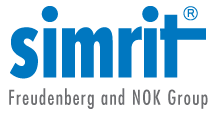New Fluid Power ISO Standards Approved

Over the past two months, a series of meetings in London, United Kingdom were held to discuss developments and updates concerning fluid power ISO standards. The meetings included discussions amongst the product testing and control product subcommittees as well as the twelve working groups.
They met to further progress on existing projects, discuss reviews of published standards, and to explore new fluid power industry project avenues.
New Standards
The technical committee (TC 131) has published two new ISO standards for the fluid power industry.
ISO/TS 18409:2018
Hydraulic fluid power — Hose and hose assemblies — Method of collecting a fluid sample for analyzing the cleanliness of a hose or hose assembly
Originating committee: Subcommittee 4 – Connectors (couplings)
ISO 5597:2018
Hydraulic fluid power — Cylinders — Dimensions and tolerances of housings for single-acting piston and rod seals in reciprocating applications
Originating committee: Subcommittee 7 – Sealing devices
At the London meetings, forty-five fluid power experts hailed from a wide selection of nations: China, Japan, the Netherlands, Italy, France, Germany, United Kingdom, and the United States.
Looking toward the future, Gary Baumgardner of Parker Hannifin U.S.A., invited the German fluid power contingent to give a presentation regarding ISO 18582-1 and the application of its methodologies for industrial automation and fluid power integration with the Internet of Things:
Fluid power —Specification of reference dictionary — Part 1: General overview on organization and structure and ISO 18528-2, Fluid power — Specifications of reference dictionary — Part 2: Classes’ and properties’ definitions for pneumatics.
About the ISO:
ISO (the International Organization for Standardization) is a worldwide federation of national standards bodies (ISO member bodies). The work of preparing International Standards is normally carried out through ISO technical committees. Each member body interested in a subject for which a technical committee has been established has the right to be represented on that committee. International organizations, governmental and non-governmental, in liaison with ISO, also take part in the work. ISO collaborates closely with the International Electrotechnical Commission (IEC) on all matters of electrotechnical standardization.




